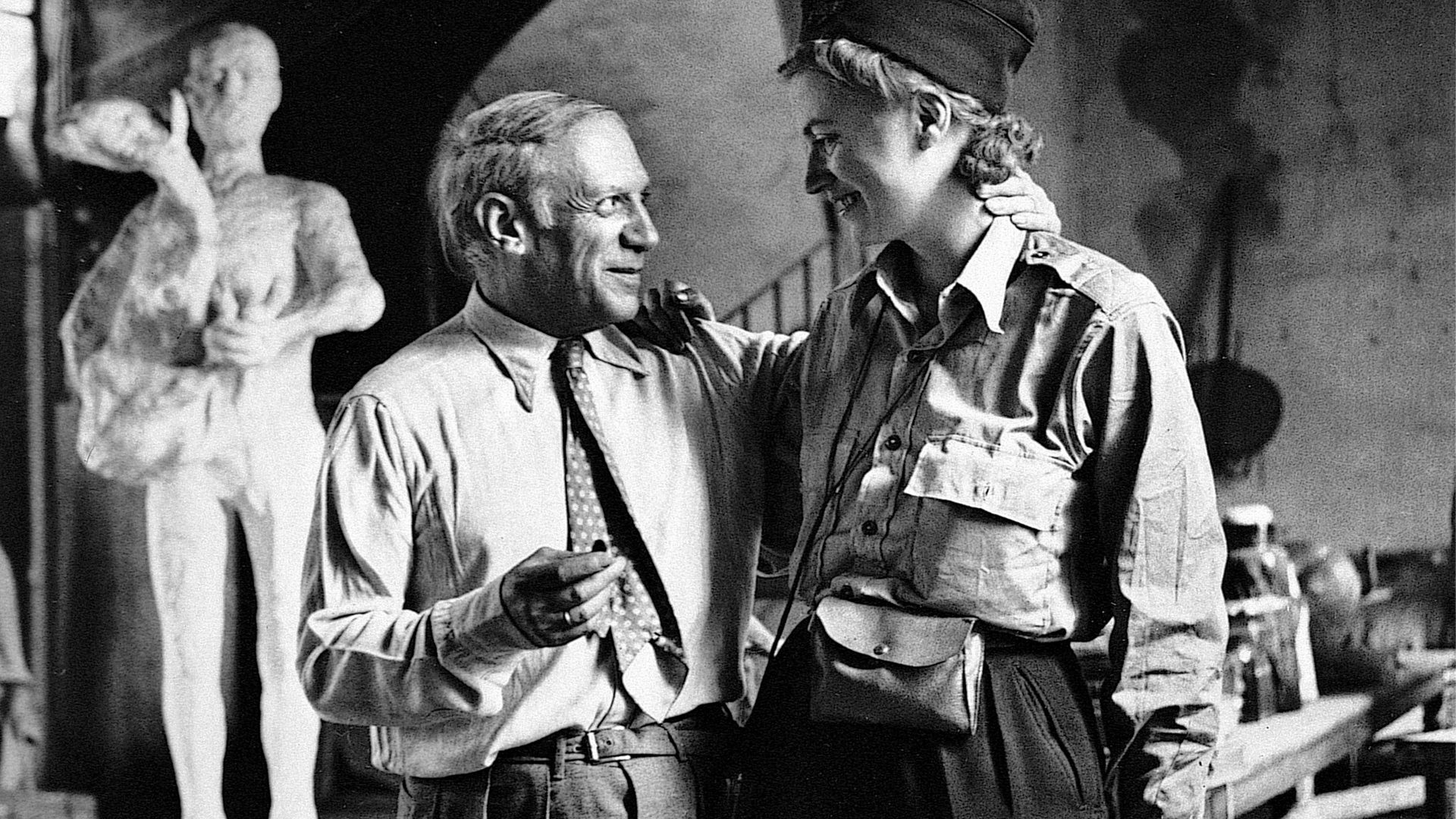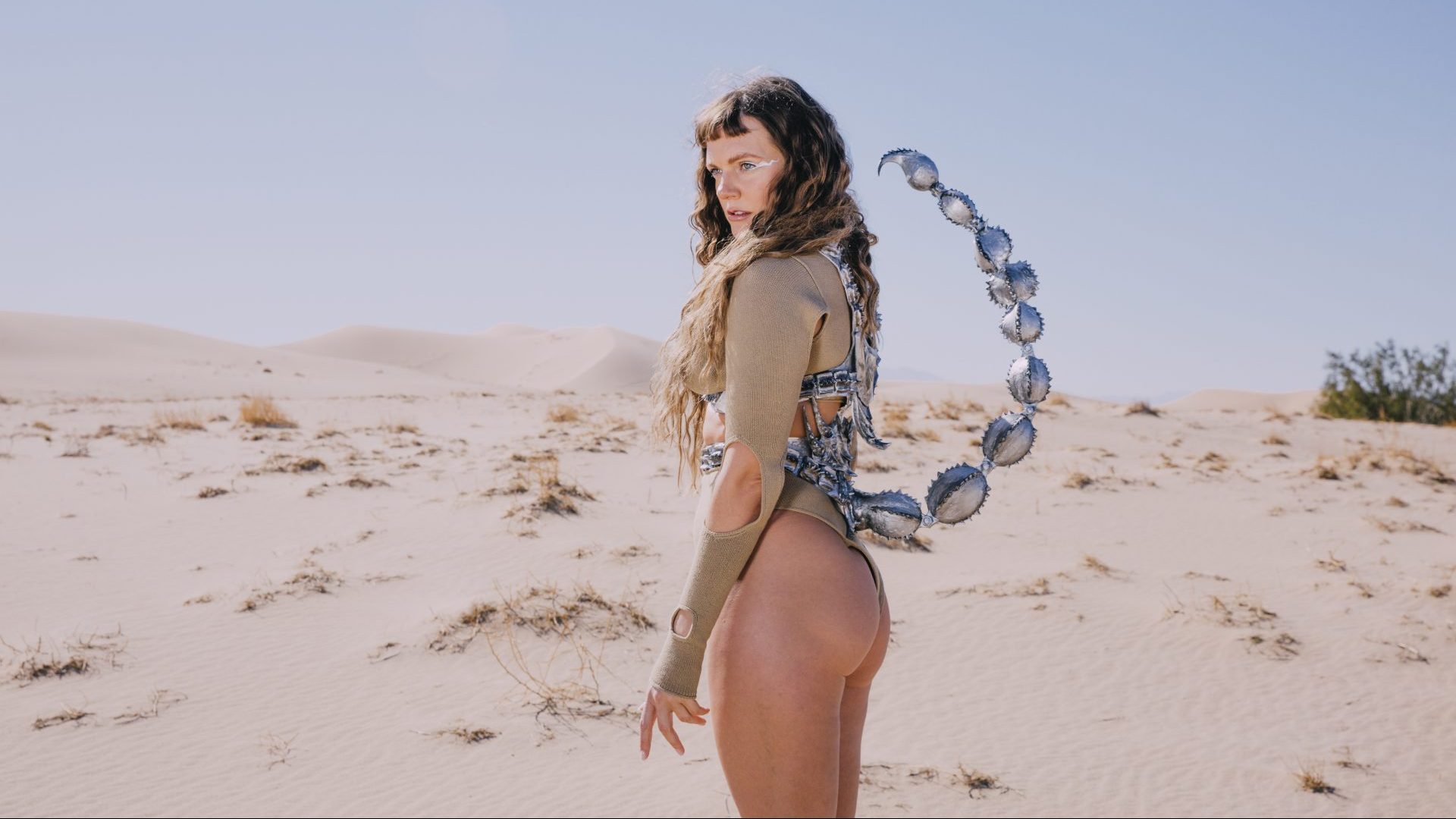In the summer of 1937, a bunch of free-spirited artists arrived in Mougins
in the south of France to spend a hedonistic time in the sun, drinking wine, talking and love-making. But more, they were there to fall at the feet of the era’s most influential artist – Pablo Picasso.
He had just completed his masterpiece, Guernica, and was perhaps ready for the diversion that the new arrivals could offer. It was a feverish time. The Spanish civil war was raging, Hitler and his Nazis were growing in menace. There was a sense that this would be their last fling before the clouds of war closed in.
He already knew some of the visitors, who included the surrealist Max Ernst, the poet Paul Éluard and his wife, Nusch, an artist, Leonora Carrington and Eileen Agar. The artist Roland Penrose was with the model and photographer Lee Miller, with whom he was enjoying an on-off affair. Picasso was clearly taken with the vivacious 30-year-old and promptly painted not one but six portraits of her, jointly titled L’Arlésienne – the girl
from Arles, already the title of a painting by Van Gogh and a story by Alphonse Daudet, later made into a drama with music by Bizet.
Penrose wrote how he rendered her on a bright-pink background in profile, “her face a brilliant yellow, like the sun… Two smiling eyes and a green mouth were placed on the same side of the face and her breasts seemed like the sails of ships filled with a joyous breeze. It was an astonishing likeness.”
She responded by reaching for her trusty Leica and photographing Picasso in return. It was the start of a relationship that would last until her death, aged 70, in 1977, during which time she was to take more than 1,000 photographs of him. More than 100 of them are now on show in a new exhibition at Newlands House Gallery in Petworth, West Sussex, which opened only in 2019 and maintains the quirky intimacy one might expect from what used to be a doctor’s house.
Astonishingly, thousands of her images were left undiscovered until her son, Antony Penrose, discovered them in 2013 in the attic of the family home, Farley Farm in East Sussex. Antony, who had a difficult relationship with his mother, admitted: “I could not believe she had been the same person that created this material.”
What kind of person was she? Her birth in upstate New York, her rape by a family friend, the breakthrough into modelling for Vogue in New York, have
been well chronicled. Her first cover picture is included in the show, but posing for magazines was not enough for her. She wanted to be on the other
side of the lens, and in 1929 she sailed to Paris more than prepared to use her beauty as a passport to that dazzling cultural milieu.
It worked. She persuaded the surrealist photographer Man Ray to take her on as an assistant. Despite his initial reluctance, he was swiftly bowled over by this force of nature and within weeks they were living together. He taught her a great deal about photography, but it was a volatile relationship that ended in considerable bitterness, and soon afterwards she married an Egyptian businessman in 1934 and made a new home in Egypt.
It was a life that was never going to satisfy anyone as restless as Miller who, bored of photographing ruins and sand dunes, and yearning for bright lights and stimulating company, returned to England, travelled through Greece and Romania with Roland Penrose – now her lover – and on to Antibes, where they stayed with Picasso and his partner, Dora Maar.
Inevitably, there has been conjecture about the relationship between Miller and Picasso, even if they were in relationships with other people. Were they just close friends? Were they lovers? Miller and her group were indifferent to the sexual standards of the time and readily, and guiltlessly, took lovers even among their own circle.
As Antony Penrose wrote: “They all acted in a very liberal manner when it
came to sexuality. They had made up their minds that they were not going to
be bound by usual convention or driven by jealousy.”
He hints at the possibility of them being lovers by referring to another painting by Picasso of Miller in the L’Arlésienne series, this time in gaudy
yellows with prominent circular breasts. Like the others, it was inspired by a story of a woman whose sexuality was so overwhelming it proved fatal for her lover.
“Picasso definitely had a very strong affection for her that went way beyond
fancying her,” he wrote. “One of the things he valued in women was intelligence.”
That affection was never more evident than at their first reunion after the war. Now working as a war photographer for Vogue, she had returned from St Malo after covering a bloody encounter between the allies and Germans and arrived in Paris on the day of liberation in August 1944. She went straight to Picasso’s studio and hammered on the door. Penrose writes how he opened it and “nearly fell over backwards”.
“And he hugged her and he kissed her and he hugged her, and then finally, when he stood back, he said: ‘It’s incredible. The first allied soldier I should see is a woman. She is you.’”
In the photograph she took, using a timer, Picasso is smiling up at Miller –
unusually, most photographs have him staring hard at the camera – and she
smiles back. It’s a tender, uninhibited moment. Friends? Lovers? Maybe both.
From then, through the 1940s and into the 1960s, she and Roland were regular visitors to Picasso’s home in the south of France.
Picasso’s default pose was to glare at the camera, cigarette in mouth or
smouldering in his hand, so it is something of a surprise to discover
the cheerful family scenes Miller took of him holding his son Claude
aloft in the sea, or on the beach in 1949 with a family friend, her daughter and Claude, or holding what looks like a cigarette in the mouth of a sculpture while young Antony looks on.
One of his amusements was to make his guests dress up in masks or false noses and spectacles, and Miller took many photographs of herself, Picasso
and Antony larking about in the studio. For Picasso, there was a mischievous side to these games, something more like truth and consequences, in which the players might reveal something embarrassing about themselves.
Miller and Roland, whom she had married in 1947 when she became pregnant with Antony, moved to Farley Farm and although she claimed they
were the happiest times of her life, she also admitted she was “encased in a
wall of hate and disgust”, overwhelmed with depression and struggling with alcoholism.
To give her life some reason, so lacking since the heady days of her wartime adventures, she became a cook. Not just any cook. She brought the same gung-ho, non-stop enthusiasm to her new hobby as she had to photography by making mighty elaborate meals, and transforming Farley Farm into a mecca for her artistic friends.
Among the visitors was Picasso, who became the subject of some of Miller’s most endearing images; a sweet picture of him with Antony on his knee, the two looking at each other with undisguised affection, and another that catches Picasso holding the boy as they admire their farm’s prize bull. He painted the witty Grasshopper Bulls as a memento.
Many images of Picasso and their surrealist set were published in Vogue, but extraordinarily the fashion bible carried Miller’s gruelling set of images from Nazi concentration camps. She had been one of the first photographers to enter Dachau and at first could not comprehend the sheer bestiality of what she was seeing, but was compelled by her outrage to take photographs that are brutally explicit.
“Believe it,” she exhorted her Vogue editor in London and the magazine did
just that, giving over pages to her report and photographs, incongruously displaying them between fashion tips and frocks. A small selection is in the show, but they are almost too gruesome to look at and such images would almost certainly not be shown in newspapers today. They are not included in the catalogue.
That same evening, having travelled on to Munich, Miller and Life
magazine photographer (and sometime lover) Dave Scherman persuaded the authorities to let them use an ordinary building as a billet. The result was an image that has become fascinating in its very banality – a bathroom with boring tiles, soap dishes and humdrum furnishings. So ordinary. The house had been owned by Adolf Hitler.
In an act that mixed defiance with contempt, she hopped into the tub, leaving her boots still covered in mud from the camps on the bath mat,
propped a photo of the Führer on the side of the bath and washed herself
with a flannel. She looks slightly away from the camera as if to say: “Look
what I’m doing. Look how easy it is to mock a monster.”
So typical. Bold, fearless, glamorous, she was seized with a furious lust for
life, a yearning for new adventures, new feelings, new experiences. As a
soldier she met during the allied advance on Luxembourg said: “Lady, every time you turn up something happens.”
Lee Miller and Picasso is at Newlands House Gallery, Petworth, West Sussex,
until January 8. Newlands is a member of Sussex Modern, a partnership between 41 cultural organisations and vineyards based in Sussex
Richard Holledge writes about the visual arts for the Wall Street Journal, Gulf
News, the FT and the New European




